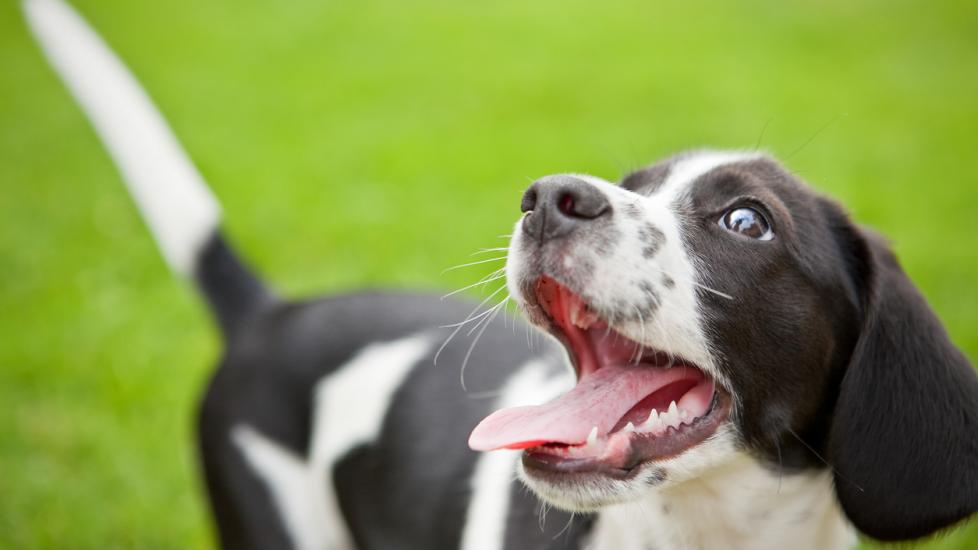Cryptorchidism in Dogs
What is Cryptorchidism in Dogs?
Cryptorchidism is a condition found in male dogs in which one or both testicles have not descended into the testicular sac (scrotum). Testicles usually descend around 6–16 weeks of age.
When a dog is born, the testicles are generally located near the inguinal ring, an area around the groin, and are guided by the gubernaculum, a structure that connects the testicle to the scrotum. During development, this structure is located near the kidney.
Cryptorchidism occurs when the gubernaculum fails to develop properly, causing the testicle or testicles to fail to descend into the scrotum. If only one testicle descends, it is usually the left testicle, with the right testicle failing to do so. When neither testicle descends, the dog is typically sterile, since the body temperature usually prevents sperm production.
Causes of Cryptorchidism in Dogs
Cryptorchidism is genetic and linked to the X chromosome. If the parental history of the dog is known and the father had cryptorchidism, there is an increased chance that the offspring may have it. Breeds likely to have the cryptorchidism gene include:
-
Yorkshire Terriers
-
Pomeranians
-
French Poodles
-
Siberian huskies
-
Miniature Schnauzers
-
Shetland Sheepdogs
-
Chihuahuas
-
German Shepherds
-
Dachshunds
-
Brachycephalic (smoosh-faced) breeds
How Do Vets Diagnose Cryptorchidism in Dogs?
Cryptorchidism may be diagnosed based on family history. When family history is unknown, your vet will do the following in a physical exam:
-
Check the scrotal sac and its contents to make sure there are no swellings and that both testicles are present in the sac.
-
If the testicles are not palpable in the sac, the vet will palpate the rest of the abdomen and the area near the groin to check for any structure that may feel like a testicle.
-
Examine the penis to check for penile spines, which disappear after neutering (6 weeks).
Additional testing may be recommended, such as an hCG (human chorionic gonadotrophin) or GnRH (gonadotrophin-releasing hormone) response tests, that is done to evaluate castration status. Typically, a GnRH test is used, when possible, because there is decreased risk of an allergic reaction.
Treatment of Cryptorchidism in Dogs
The only treatment for cryptorchidism is surgery. The dog should be neutered to avoid breeding, and to prevent testicular torsion and testicular cancer, which typically affect the undescended testicle.
Surgery can be complicated because the undescended testicle must be located first. This can be done using the following procedures:
-
Palpation: A procedure that includes using pressure points from fingers to identify a specific area. This may be helpful to determine if the testicle is located near the groin.
-
Ultrasound: A medical device for imaging used to determine location of a testicle if it cannot be located through palpation.
-
Exploratory surgery: A procedure where the abdominal cavity is opened, and the surgeon inspects various areas of the abdomen for the retained testicle. This typically takes place after palpation and ultrasound since the surgery helps to pinpoint where the testicle may be to minimize surgical time and complications.
The undescended testicle(s) can be anywhere in the area between the scrotum and the kidney. They may be smaller than normal testicles, increasing the difficulty in locating them. The testicle(s) may be hidden in other tissue. Dogs with this issue will typically have multiple surgical sites to remove and locate both testicles.
Cost of Surgery for Cryptorchidism in Dogs
Expect to pay more overall for this issue, as additional testing may be needed to locate the testicles and confirm their presence. There are additional considerations that factor into cost, including but not limited to:
-
Increased surgical time caused by attempting to locate the undescended testicle
-
Additional surgical sites and materials used during the procedure
-
Additional surgeries that may be needed to correct the issue
-
Referral to a specialist
It is important to speak to the veterinarian about the surgical treatment plan to get an accurate range of cost.
Recovery and Management of Cryptorchidism in Dogs
Delaying neutering until 1 year of age is typically recommended for puppies diagnosed with cryptorchidism, to give the testicle(s) time to descend into the scrotum.
Even if both testicles do descend, it is still recommended to neuter a dog with cryptorchidism, since it is a hereditary defect of the gubernaculum. After the neuter procedure, recovery is typically two weeks total.
It is beneficial to limit activity to reduce swelling as much as possible. Dogs may wear an Elizabethan collar or another comparable cone to prevent licking and irritation of the surgical site. The site should be checked daily for swelling and redness.
Discuss surgical aftercare with your vet prior to surgery as well when picking up your dog after surgery to establish a follow-up timeline and make sure that surgical recovery is outlined.
Cryptorchidism in Dogs FAQs
What are the surgical risks for cryptorchidism in dogs?
The most common complications from surgery can include hemorrhage, pain, swelling, surgical site splitting, discharging fluid, hypoglycemia, hypothermia.
Is cryptorchidism in dogs fatal?
No, the condition of cryptorchidism is not fatal. However, it can lead to cancer, which can be fatal.
Is cryptorchidism in dogs genetic?
Yes, cryptorchidism is genetic. It is associated with the X chromosome.
References
1. Cornell University College of Veterinary Medicine. Canine Reproductive Function Tests. March 13, 2019. https://www.vet.cornell.edu/animal-health-diagnostic-center/testing/protocols/canine-reproductive-tests
2. Davidson AP. Canine cryptorchidism. Clinician’s Brief. January 2014. https://www.cliniciansbrief.com/article/canine-cryptorchidism.
3. Lundgren B. Cryptorchidism (retained testicles) in dogs and cats.
Veterinary Partner. August 8, 2017. https://veterinarypartner.vin.com/default.aspx?pid=19239&id=4952745.
4. Davidson AP. Reproductive disorders of male dogs. Merck Veterinary Manual. June 2018. Accessed February 9, 2022. https://www.merckvetmanual.com/dog-owners/reproductive-disorders-of-dogs/reproductive-disorders-of-male-dogs
Featured Image: iStock.com/sdominick
